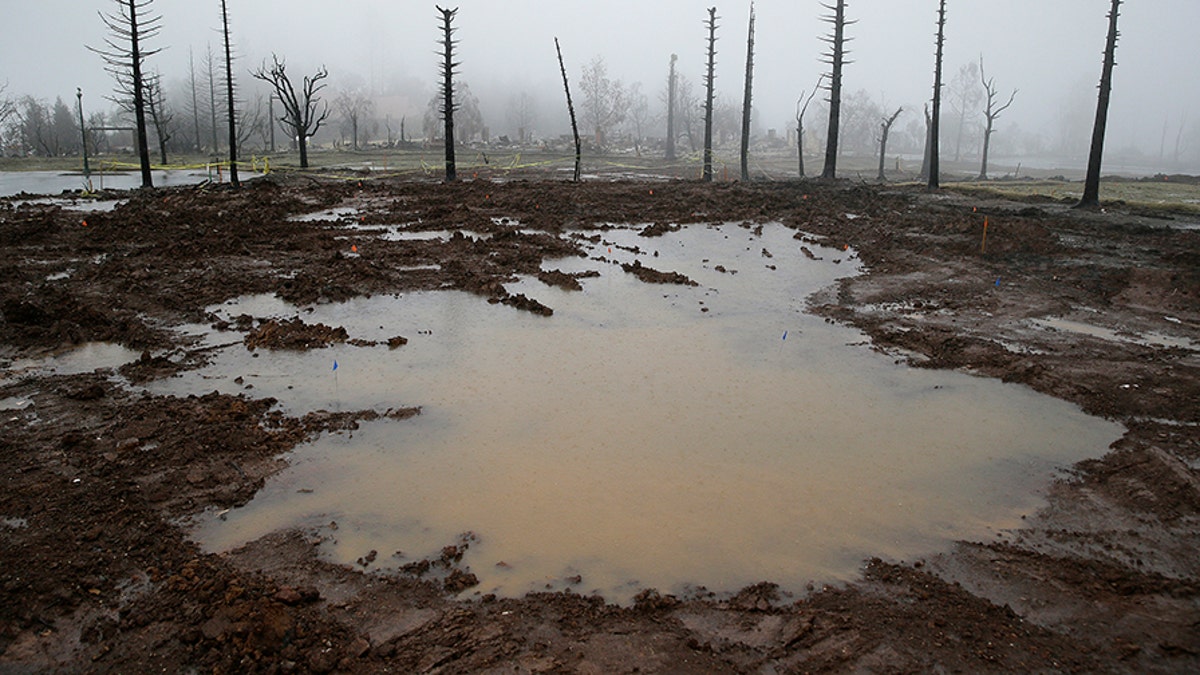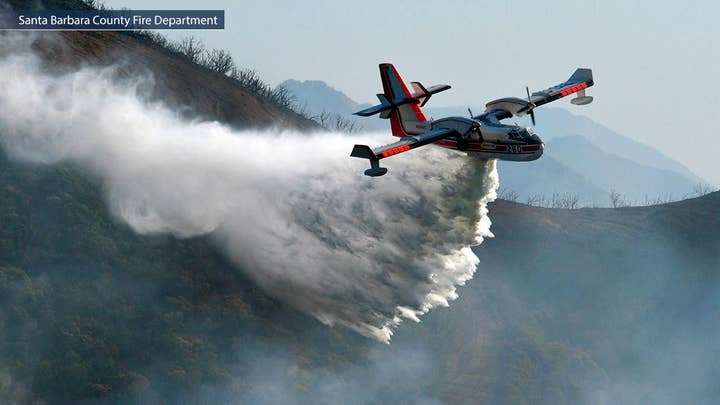
Rain water pools where a Fountaingrove neighborhood home once stood Monday in Santa Rosa, Calif. (AP Photo/Eric Risberg)
A rare line of Southern California storms unleashed rain that ramped up the risk of mudslides and flash floods in fire-ravaged communities, forcing evacuations for neighborhoods below hillsides burned by the massive Thomas fire, the state’s largest wildfire in history.
About 21,000 people were evacuated from burn areas Monday as the first major rainstorm in nearly a year moved into Southern California.
About an inch of rain is forecast for downtown Los Angeles, the most in nearly a year.
In the foothills just northeast of Los Angeles, people placed sandbags outside houses that survived a December fire that scorched more than 24 square miles, destroyed 60 homes and damaged 55 others.
A years-long drought eased in California last spring, but Northern California had a dry start to winter and hardly any measurable rain fell in the south over the past six months. The extremely dry conditions and high winds last year led to some of the most destructive fires on both ends of the state.
The blazes leveled entire neighborhoods, killing 44 people and destroying more than 8,900 homes and other buildings.
“While the recent burn areas are most threatened and should be emphasized, flash flooding is possible nearly anywhere in Santa Barbara, Ventura and Los Angeles counties,” The National Weather Service told Fox 11.
“A cold front will interact with a plume of subtropical moisture and will bring a period of widespread moderate to heavy rainfall to the region tonight through Tuesday,” according to the NWS. “Behind the front, scattered showers and isolated thunderstorms will continue through Tuesday evening. Rainfall rates between one half and one inch per hour are possible during the peak of the storm. Such rain rates are capable of producing flash flooding. Recent burn areas will be especially vulnerable where dangerous mud and debris flows are possible.”
The storm coming in from the Gulf of Alaska could dump up to 4 inches of rain on Northern California areas still recovering from fires before clearing up by Tuesday evening, NWS meteorologist Steve Anderson said.
Robert Lewin, director of the Santa Barbara County Office of Emergency Management, urged residents in parts of Summerland, Carpinteria and Montecito to leave by midday. The hillside communities were evacuated last month as the massive Thomas fire raged. Evacuations also include homes near other burn areas dating to 2016.
“Creeks that normally would be dry would turn into raging rivers of mud and debris and large rocks and trees,” Lewin said. “These can be quite damaging. They’ll destroy roads, they’ll take out homes.”
Teri Lebow, 65, of Montecito told The Los Angeles Times that her home suffered ash and smoke damage from the wildfires.
On Monday, she was preparing to evacuate once again because of heavy rain. “I feel like it’s insane,” she said.
“I’m just tired. I can’t seem to get my life kick-started,” Lebow told The Times.
NWS also issued a winter weather advisory for portions of the Sierra Nevada above 7,000 feet, forecasting about 4 to 7 inches of snow and up to 1 to 2 feet on higher peaks Tuesday. It said travelers should prepare for difficult travel conditions, including gusty winds, low visibility and slick and snow-covered roads.
The Associated Press contributed to this report.









































